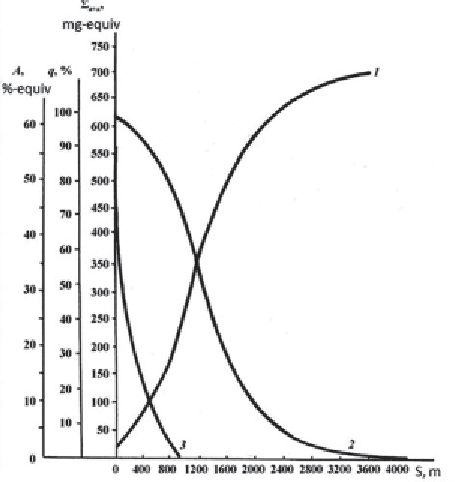Geology Reference
In-Depth Information
Figure 2.17
South Caspian Depression. Ground water salinity, alkaline gradient content
and primary alkalinity factor vs. distance of wet intervals from Productive Sequence base:
1.
Regression lines
Σ
a+k
=
f
(
S
);
2.
Regression line
q
=
f
(
S
);
3.
Regression line
A
=
f
(
S
);
S
is distance to the PT base.
Pliocene intervals but also the overlying sediments as long as they are satu-
rated with hydrocarbons. Examples are the Surakhany, Kala and Bibieybat
fields, where the water salinity decrease down the section (in the envi-
ronment of the total hydrocarbon saturation of the section) begins with
the Apsheron Stage, and the Peschany, Zykh and Zyrya fields (there, the
inverted nature of the hydrochemical profile shows up beginning with
various horizons of the Balakhany Fm. wherever these horizons are the
uppermost oil-saturated intervals in the stated fields).
Characteristic in this respect is Zyrya Field. There, the production is
associated only with the lower Series of the Middle Pliocene (starting
with NKG formation). The overlying “Pereryv” (hiatus) Formation (the
Balakhany Fm.) is totally devoid of hydrocarbons and includes waters with
the salinity of 150-160 g/l (Mekhtiyev, Akhundov and Rachinsky, 1970). In
other areas, such salinity corresponds with the uppermost Middle Pliocene
(Surakhany Fm.) and sometimes even with its overlying Akchagyl and
Apsheron stages. Within the structure the vertical distance between the

